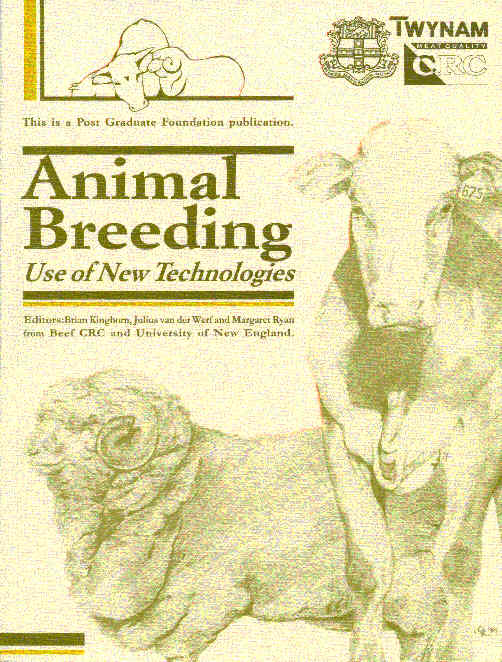 Animal
Breeding:
Animal
Breeding:
Genetic markers are now being used to give DNA tests for genes affecting animal performance. Oocyte harvesting and cloning are being added to artificial insemination and embryo transfer as tools for reproductive manipulation. Veterinary surgeons are not only in demand to carry out these technologies, but they find themselves giving advice on the design of breeding programs which they drive, and the selection of target animals. Genetic markers promise to help avoid genetic disorders, and make gains in carcass traits and disease resistance. Fast-turnover juvenile schemes give lower selection accuracy but potentially much more gain per year. Cloning can lead to significant jumps in productivity and uniformity at the commercial level, but at high cost. How do we exploit these technologies to maximise gains, maintain genetic variation, avoid inbreeding and minimise costs and maintain animal welfare? This book provides insight into the design and implementation of breeding programs to maximise return from investment in new technology.
| Chapter | Title | Author | Page | |
|
|
||||
| 1 | An overview of animal breeding and the role of new technologies. | Julius van der Werf | 1 | |
| 2 | The building blocks of quantitative genetics. | Brian Kinghorn | 11 | |
|
|
||||
| 3 | Simple selection theory and the improvement of selection accuracy. | Julius van der Werf | 19 | |
| 4 | The genetic basis of crossbreeding | Brian Kinghorn | 35 | |
| 5 | Estimated breeding values and their properties. | Julius van der Werf | 55 | |
| 6 | Use of information from relatives in genetic evaluation. | Julius van der Werf | 73 | |
|
|
||||
| 7 | Genetic maps and detection of major genes. | Brian Kinghorn | 99 | |
| 8 | DNA tests and segregation analysis to help manage genetic disorders. | Brian Kinghorn | 111 | |
| 9 | Marker Assisted Selection | Julius van der Werf | 119 | |
| 10 | DNA fingerprinting for routine pedigreeing. | Natalie Barnett | 131 | |
|
|
|||||||
| 11 | Key issues in breeding program design. | Brian Kinghorn | 141 | ||||
| 12 | Nucleus breeding schemes | Brian Kinghorn | 151 | ||||
| 13 | A
special case – the design of dairy breeding programs.
Exercise on design – the effect of prolificacy on optimal age structures. |
Julius van der Werf | 159 | ||||
|
|
|||||||
| 14 | Reproductive technology – theory and practice. | Michael J. D'Occhio | 171 | ||||
| 15 | Inbreeding and the effects of increased prolificacy | Julius van der Werf | 187 | ||||
| 16 | Boosting fecundity - the roles and value of AI, MOET, Oocyte pickup and IVF in animal breeding. | Brian Kinghorn | 199 | ||||
| 17 | Cloning technology – theory and practice | Michael J. D'Occhio | 213 | ||||
| 18 | Animal production and breeding systems to exploit cloning technology. | Brian Kinghorn | 237 | ||||
| 19 | Sexing of semen and embryos - methods and value. | Michael J. D'Occhio | 247 | ||||
|
|
|||||||
| 20 | Description and targeting of breeding objectives. | Brian Kinghorn | 265 | ||||
| 21 | Genetic improvement in the animal breeding industries. | Robert Banks | 277 | ||||
| 22 | Tactical approaches to implementing breeding designs. | Brian Kinghorn | 291 | ||||
|
|
|||||||
| Introduction
to computer aided learning modules.
Glossary Index |
|||||||